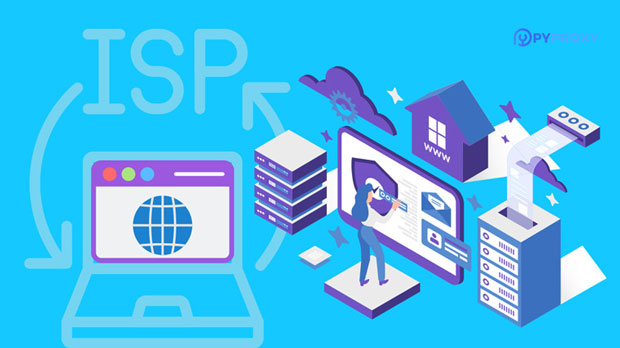When it comes to proxy services, Socks5 support is often a crucial factor for users looking for secure, fast, and flexible internet connections. SmartProxy, ProxySeller, and PYPROXY are three popular proxy providers, each offering different services and features, especially in terms of their Socks5 support. While all three providers offer sock s5 proxies, the differences lie in terms of performance, compatibility, pricing, and the overall user experience. This article delves into a detailed comparison of Socks5 support across these three services, helping users make informed decisions based on their unique needs. Understanding Socks5: A Quick OverviewBefore diving into the specifics of how SmartProxy, ProxySeller, and PYPROXY differ in their Socks5 support, it's essential to understand what Socks5 is. Socks5 is a proxy protocol that facilitates the exchange of data between a client and a server over the internet, acting as an intermediary. The protocol offers enhanced security, flexibility, and support for various protocols like HTTP, FTP, and others. One of its main advantages is the ability to handle any type of internet traffic without altering it, which makes it ideal for users who prioritize privacy and speed.SmartProxy: A Strong Performer in Socks5 SupportSmartProxy is known for its extensive proxy network and excellent customer support. When it comes to Socks5, SmartProxy provides reliable, fast, and secure proxies that are suitable for a wide range of use cases, from web scraping to browsing and streaming.1. Socks5 Performance and SpeedSmartProxy excels in offering high-speed Socks5 proxies with minimal latency. The service boasts an extensive pool of IPs, ensuring users can access a large number of proxies to avoid bottlenecks and slowdowns. For users who need a high-performance proxy, SmartProxy’s Socks5 support is a top choice due to its reliability and speed.2. Security and AnonymitySmartProxy offers robust security features with its Socks5 proxies, ensuring that user data remains encrypted and anonymous. This is particularly crucial for users who prioritize privacy when engaging in activities like web scraping or accessing geo-restricted content. Additionally, SmartProxy employs security measures such as IP rotation and encryption, providing an added layer of anonymity.3. CompatibilitySmartProxy’s Socks5 proxies are compatible with a wide range of applications, including web scraping tools, torrent clients, and browsers. This makes it a versatile choice for different types of internet activities. Whether you are engaging in simple browsing or complex data scraping, SmartProxy’s Socks5 proxies will integrate seamlessly with your needs.ProxySeller: Affordable yet Reliable Socks5 SupportProxySeller is a more budget-friendly option for users who want reliable Socks5 proxies without breaking the bank. While it may not have the same extensive network or performance capabilities as SmartProxy, ProxySeller still offers a solid choice for those looking for a practical solution.1. Price and AffordabilityOne of ProxySeller’s biggest advantages is its pricing structure. The service offers some of the most competitive rates for Socks5 proxies in the market. For users on a budget who don’t require the high-end features of premium services, ProxySeller provides an excellent solution. While the performance may not be as fast as other providers, the affordability makes it an attractive option for many.2. Performance and SpeedWhile ProxySeller’s Socks5 proxies are generally reliable, they may not offer the same level of speed and performance as SmartProxy’s offerings. However, for users who don’t require the highest speeds and are looking for a stable connection for basic tasks, ProxySeller’s Socks5 proxies will suffice. It’s important to note that performance can vary depending on the specific proxy pool and geographic location.3. Security FeaturesProxySeller also provides secure Socks5 proxies, but the security measures may not be as advanced as those found in premium services like SmartProxy. However, for users who are primarily focused on privacy without needing top-tier encryption, ProxySeller offers a reasonable level of security to protect user data.4. Compatibility and Ease of UseProxySeller’s Socks5 proxies are compatible with many applications, but they may require more manual configuration compared to the more streamlined setup provided by services like SmartProxy. Users will need to be comfortable with a bit of technical setup to get the most out of their Socks5 proxies from ProxySeller.PYPROXY: Customizable and Flexible Socks5 SolutionsPYPROXY offers a more customizable approach to Socks5 proxies, providing a flexible service for users who need specific configurations or high levels of anonymity. While it might not have the broad appeal of larger providers like SmartProxy, PYPROXY shines in providing tailored solutions for particular use cases.1. Customization and FlexibilityPYPROXY stands out for its ability to offer highly customizable socks5 proxy solutions. This is particularly beneficial for users with specific needs, such as managing multiple proxy configurations or dealing with geo-restricted content. The ability to adjust settings for optimal performance is a unique advantage for users who require fine-tuned control over their proxy setup.2. Performance and ReliabilityWhile PYPROXY may not have the extensive infrastructure of larger providers, it still offers decent performance in terms of speed and reliability. The service’s customizable nature means that users can optimize their Socks5 proxies to suit their requirements. However, users should be aware that depending on their configuration, the performance may vary.3. Security and AnonymityPYPROXY emphasizes security with its Socks5 proxies, offering encryption and IP rotation features to ensure anonymity. The flexibility to choose different proxy settings enhances the privacy and security of the user. However, compared to SmartProxy’s comprehensive security features, PYPROXY’s offerings might be considered more niche and less polished.4. CompatibilityPYPROXY’s Socks5 proxies are compatible with a wide range of applications, but the customization options may require users to have a bit more technical knowledge. This could be a downside for beginners, but it provides advanced users with the flexibility they need.Conclusion: Which Service is Best for You?In conclusion, the choice between SmartProxy, ProxySeller, and PYPROXY depends largely on your needs and priorities. If you value high performance, speed, and reliability, SmartProxy is the clear winner, offering excellent Socks5 support with robust security features. For those on a budget, ProxySeller provides affordable Socks5 proxies that are suitable for basic tasks, though with some trade-offs in speed and security. Meanwhile, PYPROXY is the best choice for users who need highly customizable and flexible Socks5 proxy solutions, particularly for specialized tasks. By carefully considering your requirements in terms of performance, security, price, and compatibility, you can choose the service that best fits your needs.
Jul 30, 2025



































































